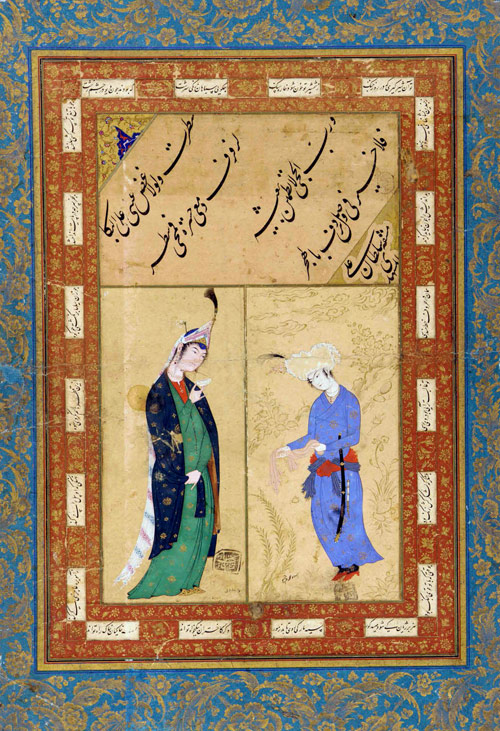Calligraphy as Visual Poetry
Calligraphy has always been the premier classical art of the Islamic world, and it comes in many forms, some practical and workaday, others subtly expressive, reserved for religious texts and poetry. When produced by highly skilled hands, the style called «nasta’liq,» developed in Persia from the 14th to 16th centuries, is considered so beautiful as to be an aesthetic end in itself: Use it to copy a page from the phone book, and you’d still have visual poetry.
Some of that poetry will be on view in «Nasta’liq: The Genius of Persian Calligraphy,» a compact exhibition opening at the Arthur M. Sackler Gallery, Smithsonian Institution, in Washington on Saturday. Most of the 20 manuscripts are from the Freer and Sackler Galleries’ superlative collection. They include a single page signed by the Tabriz calligrapher Mir Ali, credited with being one of four inventors of the style; other examples document its spread to India, Iraq and Turkey. Even if you can’t read the words of the texts, the writing, with its sensuous, arialike surges, trills and tangles, will sweep you away.
 Calligraphy as Visual Poetry
Calligraphy as Visual PoetrySource: www.nytimes.com
Calligraphy is the art of both ideal writing and an ideal soul.



